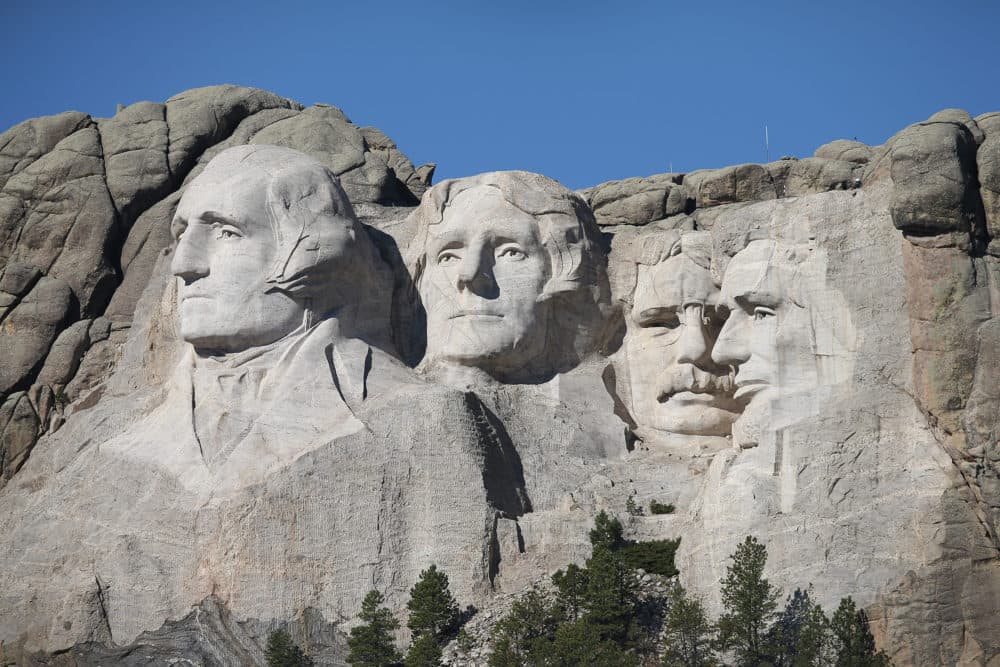Advertisement
50 Years After Mount Rushmore Occupation, Native Americans Are ‘Still Fighting’

Native American groups are protesting President Trump’s Fourth of July celebration at Mount Rushmore on Friday, and some are even calling for the removal of the national monument.
Fifty years ago this summer, the sounds of protest were also ringing through the Black Hills of South Dakota. In 1970, a group of Native American activists scaled Mount Rushmore and occupied it for months to demand the land be returned to the Sioux.
Lehman Brightman, a Sioux activist and history professor, was one of those original organizers. His son, Quanah Parker Brightman, is now executive director of United Native Americans. He says it was “inspiring” to hear his father tell him stories about the occupation when he was still alive.
“That was the first Sioux Indian uprising since [Gen. George Armstrong Custer], back in the 1800s,” Brightman says, “and to continue this history, to continue this resistance against these oppressors, to continue to fight for what is rightfully ours.”
The demonstration began when a group of Native Americans picketed at Mount Rushmore to demand the monument employ Native Americans. Brightman’s father was speaking about the atrocities committed by and during the presidencies of the men depicted on the mountain when his mic was cut off.
“My father got extremely upset on the fact that they were denying him his First Amendment rights to speak,” Brightman says. “So he wrote out a press release and he said, ‘As of darkness, we're going to take over and occupy Mount Rushmore.’ And it's really beautiful that we did that for our nation.”
Brightman says he is particularly concerned about the environmental impact of Trump’s rally, which is set to include fireworks, which have been banned in the area for almost a decade.
The National Park Service found that a minimum of 27 wildfires had been started around Mount Rushmore during annual fireworks displays between 1998 and 2009, according to a 2017 document reported by the Washington Post. The park service also documented that past firework events have caused groundwater pollution.
“We're very concerned about the safety of our water supply. We're very concerned about the safety of the monument up there in regards to the surrounding area ... the Black Hills,” Brightman says. “We're worried about fire since this is fire season.”
Advertisement
The controversy over Trump’s rally puts a new spotlight on the decades-long fight by Native Americans to uphold the 1868 Fort Laramie Treaty that designates Mount Rushmore and the surrounding Black Hills as part of "the Great Sioux Reservation, set aside for exclusive use by the Sioux people."
That treaty, and an earlier version of it signed in 1851, “guarantee [the Sioux] this land where Mount Rushmore sits as long as the grass grows, the water flows and the sun shines,” Brightman says.
Trump’s event also reaffirms the complicated history of the Independence Day holiday for Native Americans at a time when the country is undergoing a period of racial reckoning, Brightman says.
“Some people believe that the Fourth of July signifies America's independence from the British colony, but we actually lost over one billion acres of land, and every inch of this land that we're on here in North America is actually stained with Indian blood,” he says. “And it's ridiculous that we're still fighting. I'm fighting the same fight that my ancestors fought.”
Cristina Kim produced and edited this interview for broadcast with Tinku Ray. Samantha Raphelson adapted it for the web.
This segment aired on July 3, 2020.

